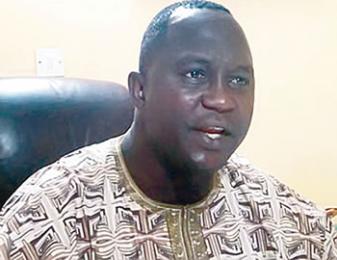It becomes easier every week to imagine America’s cities without undocumented workers.
Consider Charlotte, North Carolina, where the construction industry has relied on them in the past couple of decades as both its skyline and its appeal to business have grown. But now they are vanishing from its building sites, fearful of Donald Trump’s expansion of the deportation net.
Some retreat from their commutes after spotting an undercover police car; others take a sick day after seeing a Facebook post about an immigration raid. Like the undocumented in other sectors, they stay at home and when they miss work, there are no citizens to replace them.
David, a builder from Mexico, is one of more than 20 people the Guardian spoke with about the undocumented community in Charlotte, where 5.44% of people in the county are undocumented. Nationwide, 3.5% of the population is undocumented. In a three-part series, we will examine how a city would be affected if such workers were no longer there. This article looks at David’s industry – construction – while pieces to follow will focus on the food sector and education.
During last month’s Day Without Immigrants protest, David’s work site was “literally stopped”, he says, because none of the concrete workers came to work that day and neither did most of the framers. David chose to work that day, but his bosses told him they understood his colleagues’ reasons for striking. “They weren’t angry,” said David, whose name has been changed to protect his identity. “They were mostly worried because the workers were talking about doing it for a week next time.”
Local contractors said they were falling behind on projects because of the protests, which were by both legal and illegal immigrants. A bigger national protest is expected on May Day.
Undocumented workers make up 5% of the civilian workforce nationwide but are overrepresented in construction occupations, where they are 15% of the workforce, according to the Pew Research Center. And of the 41,000 undocumented immigrants aged 16 and older and employed in Charlotte’s Mecklenburg County, 33% work in construction, according to the Migration Policy Institute.
The city, nestled in the conservative south, is not an obvious immigrant center, but the Brookings Institute thinktank has identified it as a “major emerging” immigrant gateway because of its fast growing foreign-born population.
The influx of immigrants to Charlotte began after Bank of America moved its headquarters to the city in 1992. The corporation hired a Houston-based company to build the corporate office, but had to recruit construction workers from Texas because there weren’t enough local blue-collar workers to get the job done. News of the need for workers penetrated the Latino community on both sides of the border, and local immigration rates soared.
From 2000 to 2010, the Latino proportion of the city’s population grew from 4.7% to 8.4%. The city’s foreign-born population also nearly doubled in that time.
In that period, David lived in an affluent, predominantly white part of California. He’d lived there since he was seven, and in his late teens returned to Mexico, graduated from university, then started making trips back to the US on tourist visas.
On one of these trips he went to visit his girlfriend, who he met in Mexico. She had been raised undocumented in Charlotte and wanted to return to her home state to pursue a medical degree.
So he would typically stay there for six months, picking up jobs at construction sites, working until he had to go back. In that nearly three-year period, he learned the fundamentals of every part of the industry including framing, concrete and bricklaying. He developed close relationships with contractors, who would hire him again or pass his name on to another contractor, on each trip back to the US.
David said an employer had come to rely on him so much that his supervisor planned to speak to an attorney to see if David can get the papers needed to work legally in the US. “He said: ‘I may be paying you under the table, but I’m still making a lot of money with you here,’” said David.
The odds, however, are not in their favor. Mo Goldman, an immigration attorney in Tucson, Arizona, said it’s “nearly impossible” for an undocumented person to become a US citizen because of all the hurdles they must jump over to get legal status.
Goldman said employers come to him “all the time” seeking visas for their workers.
“Most of those cases, you just can’t do it,” he said. “Part of the problem is by doing that, the employer is exposing themselves to having hired them without lawful status or work authorization. If they sponsor them, they are potentially exposing themselves to that.”
Under Trump, the hurdles have become even more complex because people have to be much more cautious about what they reveal on any sort of immigration application. “Before, there were still those barriers,” Goldman said, “but now you must also be cognizant of the fact that the priorities of deportation are much more expansive than under the last few years under president Obama.”
The fear in Charlotte over more aggressive deportations mirrors the fears across the country.
Industry groups including the Associated General Contractors of America (AGC) have warned about the labor shortage and advocated for comprehensive immigration reform, including a path to legal status for undocumented people, a more secure border and a guest worker program. “We don’t have a domestic pipeline for recruiting and preparing construction workers,” said AGC’s director of public affairs, Brian Turmail. “While we rebuild that domestic pipeline we should offer an opportunity for people who want to come and work in construction jobs to legally enter this country.”
From 2000 to 2010, the Latino proportion of Charlotte’s population grew from 4.7% to 8.4%
In a survey this year of 1,281 contractors, only 13% said their firm had “no trouble” filling salaried and hourly positions, according to AGC. And 75% of the respondents did not expect this to be alleviated anytime soon, saying that it would continue to be hard, or become harder, “to find and hire” qualified construction workers in the next 12 months.
David said most undocumented employees are subcontractors and could disappear from job sites at any moment.
David had been working illegally in Charlotte, on a cycle of tourist visas, until an employer helped him get a student visa. The student visa was supposed to put David on the path to citizenship. But he couldn’t afford his US university’s $4,000-a-semester price tag while being legally limited to working 20 hours a week.
He left again, frustrated, and re-entered the country last year with two pairs of clothes for what he told border guards was “a quick trip” to visit a relative. He has been in the US, illegally, ever since.
David said his co-workers have talked nonstop about Trump and Immigration and Customs Enforcement (Ice) since the new deportation priorities were announced.
And while his co-workers sometimes stay home because of rumored deportation raids, David has not changed his behavior, because he has lived most of his life with Ice in the back of his mind.
In November, he didn’t think the Trump win would make that worse.
“I actually thought he [Trump] was going to help immigration because I figured him being a businessman, he would realize all the help immigrants do, especially in construction – and right now it doesn’t look so good.”
(TheGuardian US)






